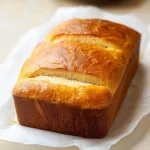If you told me years ago that I’d be baking Japanese milk bread—without a speck of gluten—I probably would’ve laughed mid-sigh while kneading sourdough. But then came the gluten-free twist, and this mama had to rethink everything. Somewhere between Emma’s love of squishy rolls and Chloe’s obsession with “cloud bread,” I discovered Gluten-Free Japanese Milk Bread (Tangzhong)—and our lives changed forever.
This loaf is all about comfort: pillowy texture, a hint of sweetness, and that bakery-style pull-apart crumb that feels like a hug. And despite its fancy name, it’s simple to make. The secret? A humble flour paste called tangzhong, gently cooked on the stove before being mixed into the dough.
I didn’t expect to fall so hard for this technique—but once I saw how soft and springy the bread turned out, I knew it was staying. The girls ask for it by name (Emma calls it “fluffy toast bread”), and even our gluten-eating friends request a loaf to take home.
And it’s not just for loaves. You can turn this same method into Tangzhong Parker House Rolls for holidays or a cozy Tangzhong Pumpkin Bread that makes fall mornings extra special.
If you’ve been hunting for a soft, sliceable gluten-free bread that truly delivers, Gluten-Free Japanese Milk Bread (Tangzhong) is the one to try.
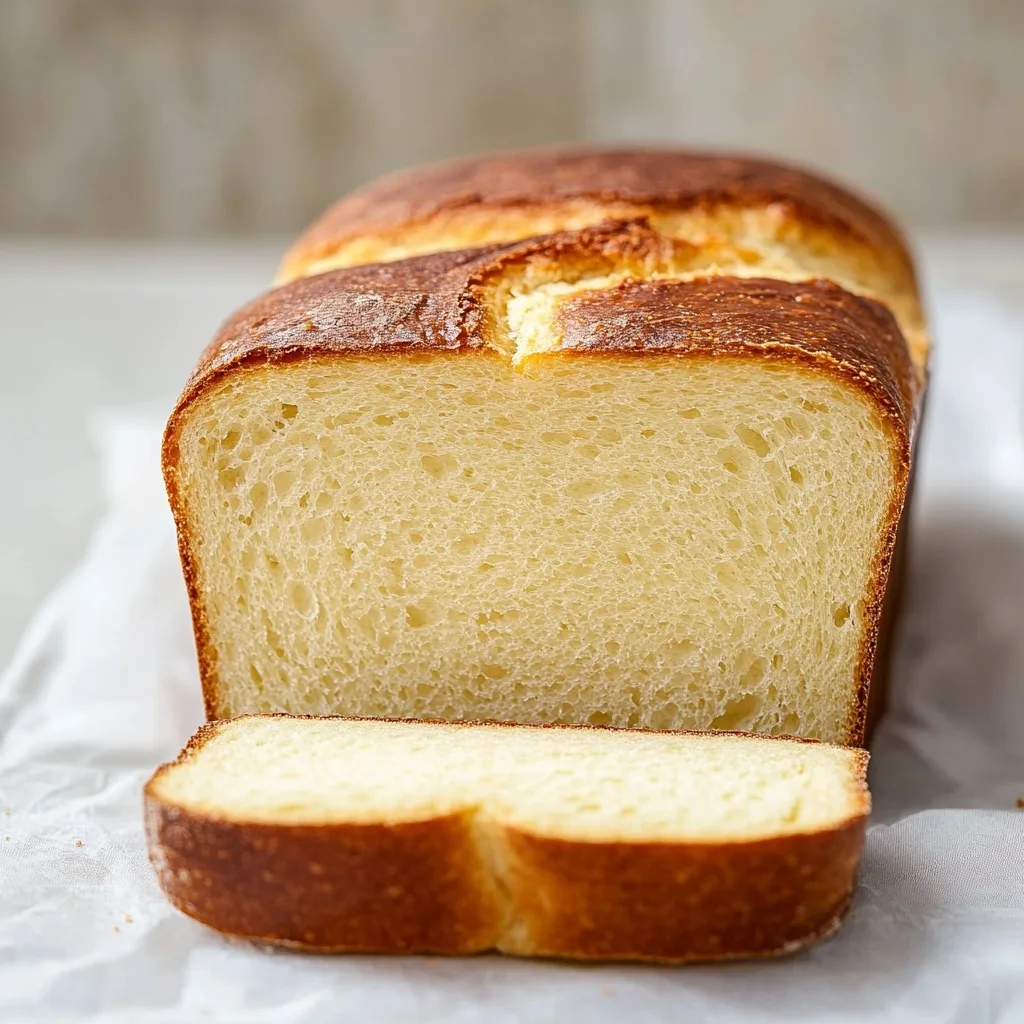
Explore the Steps
How Tangzhong Makes It Magical
What Is Tangzhong Anyway?
If you’re new to Gluten-Free Japanese Milk Bread (Tangzhong), it all starts with this: a simple cooked mixture of flour and liquid, known as tangzhong. It’s gently whisked on the stove until thick like pudding—then folded into the dough to work its magic. This centuries-old method, originally used in Asian baking, gives Japanese milk bread its famously soft and fluffy crumb.
While tangzhong has roots in both Chinese and Japanese traditions, it’s the Japanese version—especially when adapted for gluten-free baking—that has captured our family’s hearts (and taste buds). That velvety texture? Yep, that’s tangzhong doing its thing.
Why It Works So Well Without Gluten
Now here’s why it matters: gluten-free flours dry out fast. But with tangzhong, you get moisture that stays. By pre-cooking some of the starches, tangzhong traps liquid in your dough, keeping your loaf fresh and fluffy long after it’s baked.
For anyone trying to recreate the softness of wheat bread, especially something as tender as Gluten-Free Japanese Milk Bread (Tangzhong), this technique is a game-changer. You don’t need special tools or fancy flours—just patience, a whisk, and a willingness to try.
I use tangzhong in all sorts of recipes now—like soft rolls and Tangzhong Burger Buns—but none bring that same cozy wow-factor as this bread. If you’re exploring ways to make your gluten-free baking feel less like a compromise and more like a celebration, start here.
PrintGluten-Free Japanese Milk Bread (Tangzhong) – Soft, Pillowy, and Easy
The softest gluten-free Japanese milk bread made with gluten-free bread flour mix.
- Prep Time: 30 minutes
- Cook Time: 30 minutes
- Total Time: 1 hours
- Yield: 1 Bread Loaf 1x
- Category: Breakfast
- Method: Baking
- Cuisine: Japanese
- Diet: Gluten Free
Ingredients
Tangzhong
25 g Gluten-Free Bread Mix Flour
60 ml Full-Fat Milk
60 ml Water
Bread Loaf
5 g Instant Active Yeast
220 ml Full-Fat Milk (49–55 °C)
40 g Granulated Sugar
300 g Gluten-Free Bread Mix Flour
15 g Dry Milk Powder
1 tsp Salt
1½ tsp Xanthan Gum
½ tsp Baking Powder
½ tsp Cornstarch
30 g Unsalted Butter (room temp)
1 Large Egg
1 tsp Apple Cider Vinegar
Instructions
1. Make the Tangzhong
In a small saucepan, whisk together the flour, milk, and water until smooth. Cook over low heat, stirring constantly, until thickened (about 5 minutes). Let it cool to room temperature.
2. Activate the Yeast
In a bowl, mix the warm milk with sugar and yeast. Let sit for about 10 minutes until bubbly.
3. Combine Dry Ingredients
In a separate bowl, whisk together the flour, dry milk powder, salt, xanthan gum, baking powder, and cornstarch.
4. Mix the Dough
In a stand mixer, beat the egg and vinegar together. Add the cooled Tangzhong and yeast mixture. Gradually mix in the dry ingredients. Once combined, beat in the butter, a little at a time, until smooth.
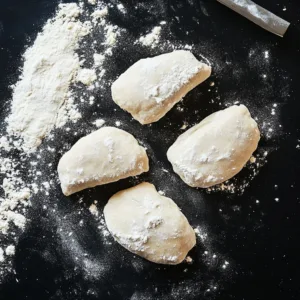
5. Shape and Proof
Shape the dough into a log and place it in a greased loaf pan. Cover with a damp towel and let rise in a warm spot for 2 hours or until doubled.

6. Bake
Preheat the oven to 180°C (356°F). Bake the loaf for 30–35 minutes, until golden and the center reads 93°C (199°F).
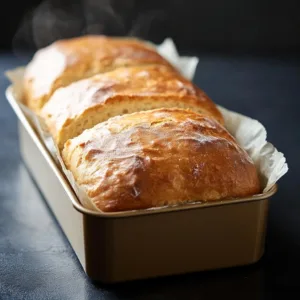
7. Cool Slowly
Turn off the oven, crack the door open, and let the bread cool inside to keep it from collapsing.
Notes
Schär Mix B Flour is ideal for this recipe.
If dough is sticky, oil your hands and utensils for easier handling.
Nutrition
- Serving Size: 1 Bread Loaf
- Calories: 1671 kcal
- Sugar: 70 g
- Sodium: 3162 mg
- Fat: 52 g
- Saturated Fat: 25 g
- Unsaturated Fat: 17 g
- Trans Fat: 1 g
- Carbohydrates: 275 g
- Fiber: 34 g
- Protein: 50 g
- Cholesterol: 271 mg
Tips for the Softest Gluten-Free Japanese Milk Bread
Best Flours for Structure
The foundation of any successful Gluten-Free Japanese Milk Bread (Tangzhong) is a flour blend that holds structure without sacrificing softness. I’ve landed on a mix that nails it every time: white rice flour for lightness, tapioca starch for that classic chew, and just a hint of sorghum or millet to mimic the heartiness of wheat. Psyllium husk powder? Non-negotiable. It creates the binding elasticity that gluten usually provides.
When you’re experimenting with alternative flours and gut-friendly baking, this bread is the perfect place to start. You’ll get all the cozy satisfaction of traditional milk bread, without any of the gluten.
Baking Like a Pro (No Kneading Needed)
Here’s the magic: Gluten-Free Japanese Milk Bread (Tangzhong) doesn’t need to be kneaded. In fact, the dough is closer to a batter. Don’t let that throw you! Just mix it gently, let it rise until delightfully puffy, then scoop it into your loaf pan like cake batter. Smooth the top with a spatula, and let it proof again until it jiggles with joy.
The result is astonishingly soft and sliceable—perfect for school lunches, Sunday brunches, or toasted with butter and jam. If your kids are texture-sensitive like mine, this bread wins them over every time.
Need more family-friendly recipes like this? Head to my gluten-free snacks and treats collection for cozy inspo.
Serving, Storing & Sweet Variations
Kid-Approved Uses (Mini Sliders, PB&J)
In our house, Gluten-Free Japanese Milk Bread (Tangzhong) doesn’t last long. The girls practically beg for it fresh out of the oven—Emma slices it thick for peanut butter and banana sandwiches, while Chloe turns hers into mini grilled cheese sliders. It’s so soft and tender, you don’t even need to toast it (though it toasts beautifully if you do).
This loaf is our go-to for Saturday morning French toast and sweet holiday bread pudding. The texture stays dreamy for days—no crumbling or sad dry ends. Just wrap it in a beeswax wrap or airtight container and enjoy soft slices for up to 3 days. Beyond that? Freeze it! A quick toast brings it right back to life.
Need a protein-packed dinner idea that pairs perfectly with it? Try this cottage cheese pizza crust for a wholesome balance.
Sweet Twists (Add Chocolate, Ube, or Raisins)
Want to take your Gluten-Free Japanese Milk Bread (Tangzhong) to the next level? Mix in a few spoonfuls of ube jam, swirl in cinnamon-sugar, or fold in mini chocolate chips before shaping. It’s the perfect canvas for creativity. One time, we even stuffed it with homemade jam for an afternoon tea party (Emma wore a tutu, of course).
For a savory twist, fold in shredded cheese and herbs—it transforms the bread into a perfect side for soups or stews. And if you’re into sweet-and-savory fusion like we are, this sweet potato taco bowl with hot honey makes a perfect pairing.
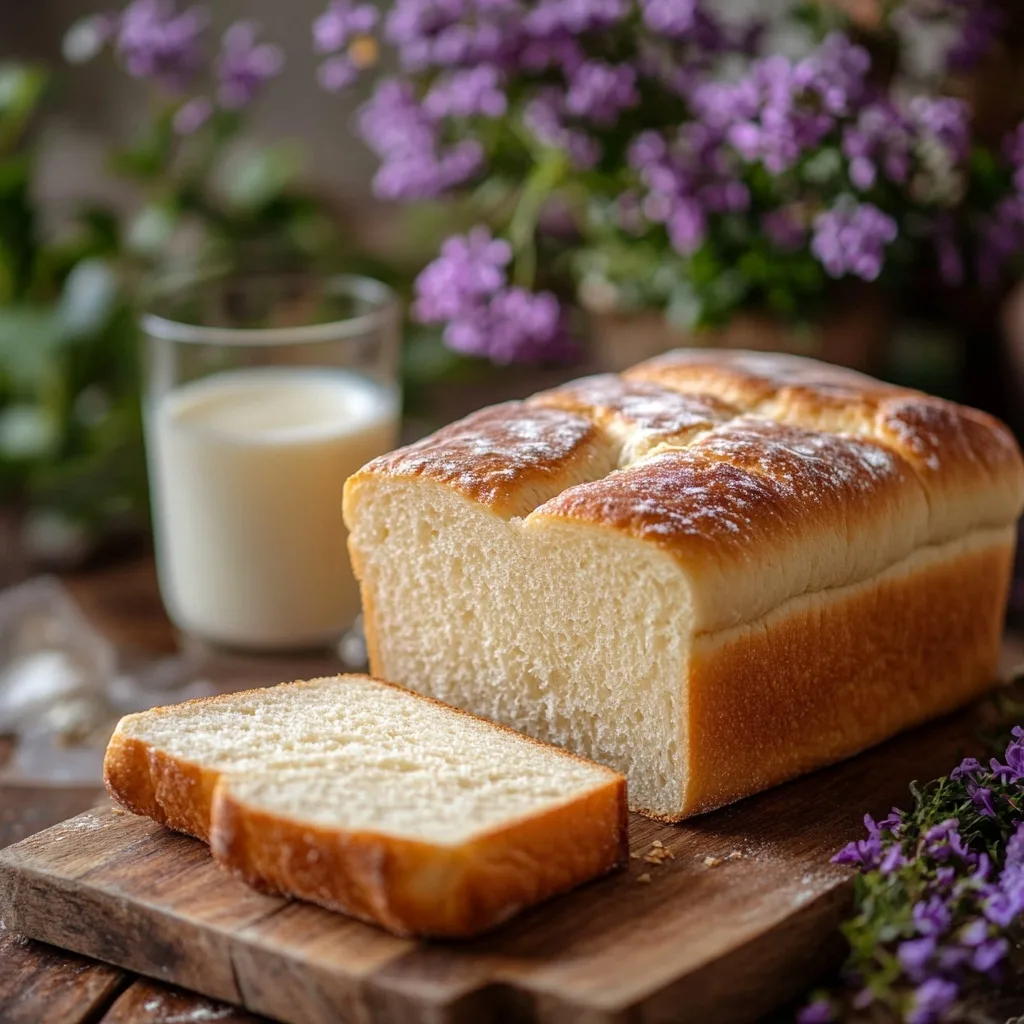
FAQs About Gluten-Free Japanese Milk Bread (Tangzhong)
Is tangzhong better with milk or water?
It depends on the final texture you’re aiming for. Using milk in your tangzhong makes the bread richer and slightly more tender, which I love for sandwich-style loaves. Water, on the other hand, creates a lighter, airier crumb. For this gluten-free version, I prefer milk for that cozy softness my girls adore—but both work beautifully.
What makes Japanese milk bread so soft?
It’s all about the tangzhong! This gentle roux locks in moisture, giving the bread its dreamy, cloud-like texture. Combined with the right flour blend and a no-knead rise, you get slices that are tender, squishy, and hold up like classic bakery bread—just without the gluten.For more about how hydration impacts bread texture and structure, check out this resource on baking science from Healthline.
Is tangzhong Chinese or Japanese?
The technique originated in Chinese baking, often referred to as “water roux.” But it gained global fame through Japanese milk bread recipes, where it became a signature method. Think of tangzhong as a shared culinary treasure that’s been lovingly adapted and reimagined—just like this gluten-free version on your table.
Which is better, tangzhong or yudane?
Both methods yield soft bread, but they work differently. Tangzhong is cooked (like a pudding), while yudane uses boiling water poured over flour. I’ve tested both, and for gluten-free recipes, tangzhong wins for ease and consistent results. It’s more forgiving and adds that silky moisture we’re after.
A Final Thought from My Oven to Yours
If you’ve been missing soft, squishy bread since going gluten-free—this recipe is your warm welcome back. Gluten-Free Japanese Milk Bread (Tangzhong) isn’t just tender and comforting, it’s a reminder that with a little care (and a small saucepan), we can still create magic in our kitchens.
From Emma’s peanut butter sandwiches to Chloe’s grilled cheese sliders, this loaf is family-approved and mama-satisfying. It’s not about mimicking wheat—it’s about reclaiming joy, bite by pillowy bite.
Thanks for baking with me. If you try it, I’d love to hear how it turned out—my inbox is always open.
— With warmth (and extra softness),
Melisa 💚

